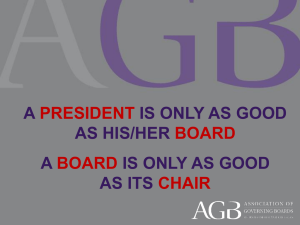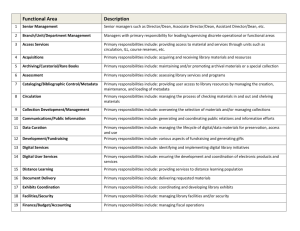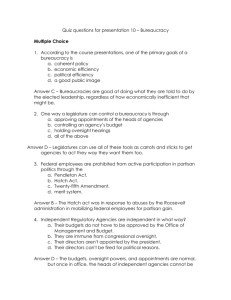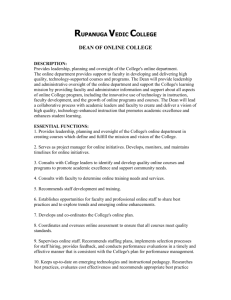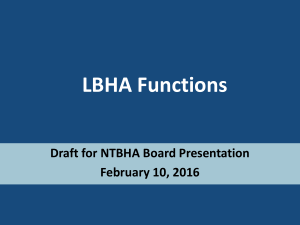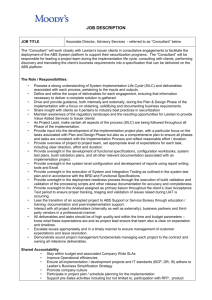APGOV Power Point 9
advertisement
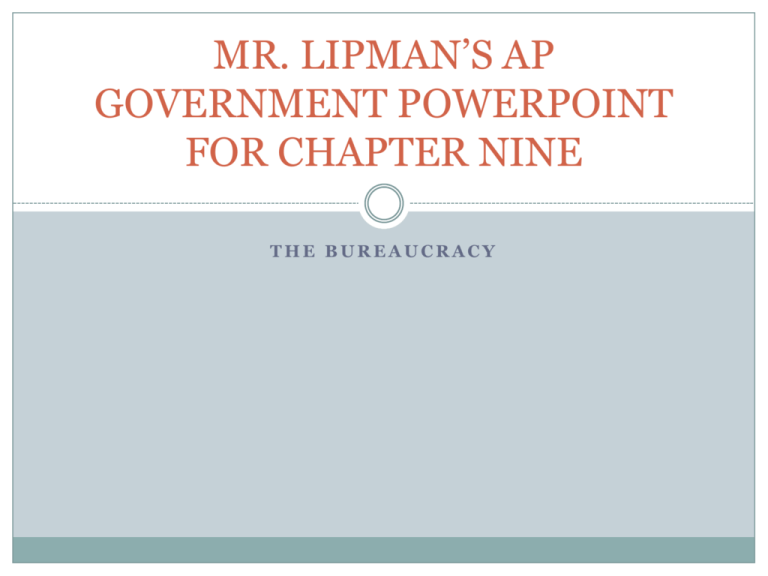
MR. LIPMAN’S AP
GOVERNMENT POWERPOINT
FOR CHAPTER NINE
THE BUREAUCRACY
Keys to the “4th “ Branch
Since it links all 3 branches together it is sometimes
referred to as the 4th branch (POLICY IS KEY)
Spoils System
Pendleton Act (1883)
Civil Service Merit System (90% of all Federal
workers)
COMMISSIONS
ICC was the first (created to end price fixing by
railroads)
Large rise in Federal Workers during depression
and LBJ’s War on Poverty (crisis or social change
increases jobs and presidential power)
Hatch Act passed 1939 to reduce gov’t workers
involvement in politics but is weakened in 1993
Government Workers and Political Involvement
• Hatch Act of 1939
– Prohibits civil servants from taking activist roles in
partisan campaigns – federal employees cannot make
political contributions, work for a particular party, or
campaign for a particular candidate
• Federal Employees Political Activities Act
of 1993
–
Liberalizes Hatch Act – federal employees can run for
office in nonpartisan elections and contribute money to
campaigns in partisan elections
The Cabinet Departments
15 departments (Homeland most recent)
All but senior people are civil service merit
system hires
Cabinet heads (Secy’s) are appointed by
President, and confirmed by Senate, but
responsible to their departments (“going
native”)
Some departments are actually Clientele
Agencies { promote interests of a given group; for
example Dept. of Agriculture, Education, and
Veteran Affairs}
Implementation is the process by which a
policy/law will be actually put into operation by the
agency
4 Different Types of Oversight
Gov’t Corporations: Businesses established by
Congress to perform a function that otherwise
would be done by pvt. Business. (ex: FDIC or TVA
or Post Office or Amtrak)
Independent Executive Agencies: usually
perform services not regulatory functions (ex:
NASA, EPA, CIA, GSA, SBA)
Independent Regulatory Commissions:
created to regulate a specific economic activity or
interest (ex: SEC or FED or FCC or NRC or FTC)
Cabinet Posts: 15 of them (example: Treasury)
Which agency provides electricity to millions
of Americans at reduced rates?
1. Environmental Protection Agency
2. National Association of Electricians Agency
3. Teamsters Union
4. Tennessee Valley Authority
5. Securities and Exchange Commission
Which agency provides electricity to millions
of Americans at reduced rates?
1. Environmental Protection Agency
2. National Association of Electricians Agency
3. Teamsters Union
4.Tennessee Valley Authority
5. Securities and Exchange Commission
The Iron Triangle
Agencies
Congressional Committees
Interest Groups
RESULT OF ALL THESE DECISION MAKING
BODIES IS POLICY MAKING
Recently becoming known as “issue networks”
What is an iron triangle?
What are iron triangles?
1. Tools of bureaucratic agencies with which they “round
up” support for their initiatives
2. Tools of Congress used to “round up” support for their
initiatives
3. The relationship structure among bureaucratic
agencies, interest groups, and congressional
committees
4. Places in the bureaucratic hierarchy that keep
employees in lower level positions
5. Overwhelmingly unconstitutional bureaucratic tools
What are iron triangles?
1. Tools of bureaucratic agencies with which they “round
up” support for their initiatives
2. Tools of Congress used to “round up” support for their
initiatives
3.The relationship structure among
bureaucratic agencies, interest groups, and
congressional committees
4. Places in the bureaucratic hierarchy that keep
employees in lower level positions
5. Overwhelmingly unconstitutional bureaucratic tools
Making Agencies Accountable
• Executive control
– Executive orders
• Congressional control
– Constitutional authority
– Funding
– Oversight hearings
Police patrol
Fire alarm
• Judicial control
– Injunctions
To Learning Objectives
What’s the difference between police patrol
oversight and fire alarm oversight?
1. Police patrol oversight done by Congress,
and fire alarm oversight done by Judiciary.
2. Police patrol oversight is constitutional, and
fire alarm oversight is not.
3. Police patrol oversight done by Congress,
and fire alarm oversight done by president.
4. Police patrol oversight responds to crimes,
and fire alarm oversight responds to natural
disasters.
5. Police patrol oversight is proactive, and fire
alarm oversight is reactive.
What’s the difference between police patrol
oversight and fire alarm oversight?
1. Police patrol oversight done by Congress,
and fire alarm oversight done by Judiciary.
2. Police patrol oversight is constitutional, and
fire alarm oversight is not.
3. Police patrol oversight done by Congress,
and fire alarm oversight done by president.
4. Police patrol oversight responds to crimes,
and fire alarm oversight responds to natural
disasters.
5.Police patrol oversight is proactive,
and fire alarm oversight is reactive.
Congressional Oversight
1. Investigatory Powers
2. “Power of the Purse” (GAO and CBO)
3. Appointment process
4. Enactment of Laws
5. Abolishment Power
Key Terms
Administrative Discretion
Administrative Adjudication
Executive Orders
Red Tape
Plum Book (top cabinet employee listings)
General Schedule (salary guide)
Dept. of Defense (largest single employer of federal
civilian workers by a dept. or agency)
Where do federal employees work?
